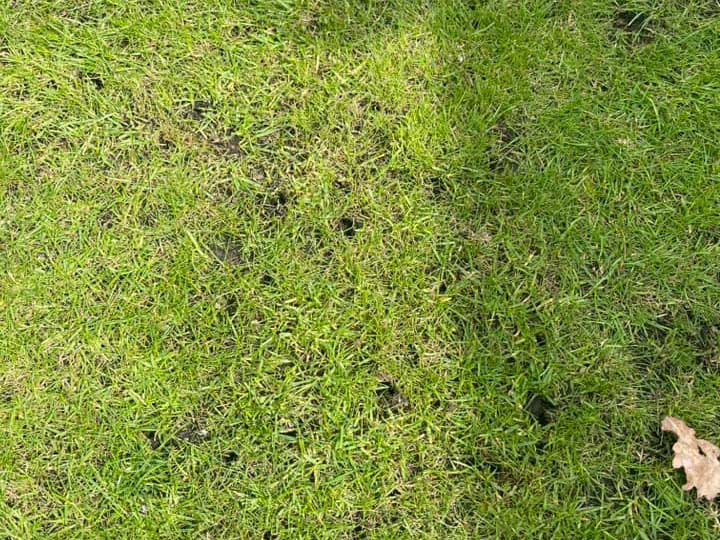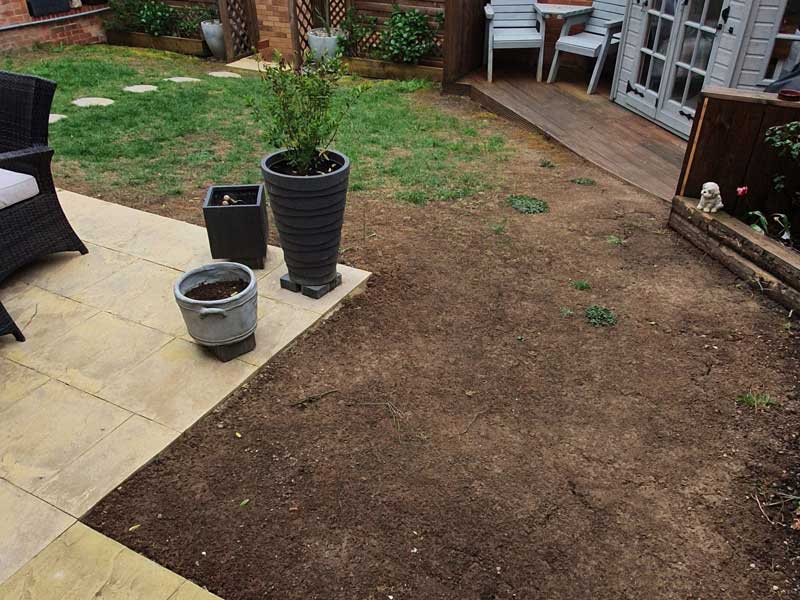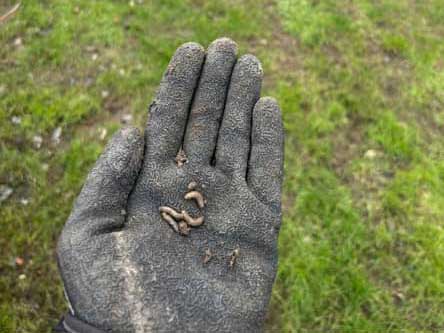Leatherjacket Season: What UK Lawn Owners Need To Do Now
27 February 2025
(Last updated: 27 Feb 2025 14:28)
 Thinning lawns with pale, weak plants that attract lots of attention from birds may well be the victims of leatherjacket attacks. Leatherjackets are the larvae of crane flies (also known as Daddy Long Legs). These larvae live in the soil and feast on the roots of unsuspecting grass plants. Fortunately, there is a solution to this distressing natural phenomenon.
Thinning lawns with pale, weak plants that attract lots of attention from birds may well be the victims of leatherjacket attacks. Leatherjackets are the larvae of crane flies (also known as Daddy Long Legs). These larvae live in the soil and feast on the roots of unsuspecting grass plants. Fortunately, there is a solution to this distressing natural phenomenon.
The UK Lawn Care Association is a group of independent lawn care professionals who are trained and equipped to minimise the damage that these greedy grubs can do. Leatherjacket control can be followed up with restorative treatments to return weakened lawns to their former glory.
How to recognise leatherjackets in your lawn
Leatherjackets rarely appear on the surface of your lawn so you probably won’t be aware of their presence until you start noticing that things aren’t right with your grass plants.
The first signs of a leatherjacket infestation are a yellowing of the grass blades, a thin, weak looking sward and more birds than usual foraging on the lawn. If there happen to be any in your area, badgers will also target leatherjacket infested lawns and creating a lot of damage in the process. These signs normally appear between January and May. In severe infestations, lawns can become completely bare in a frighteningly short space of time.
The leatherjackets will have been present since late summer, but while the grubs are tiny they have smaller appetites. It’s only as they increase in size that they start eating roots faster than the plants can re-grow them.
On closer examination, you’ll likely find that you can tug on the blades of grass and they’ll pull out of the ground with barely any resistance and no roots at all. There may be holes in the lawn, created by birds dipping their beaks into the soil to catch the juicy bugs.
Lifting the surface of a section of lawn may (or may not) reveal the leatherjackets themselves. Greyish-brown coloured, cylindrical grubs up to 50mm long, with no legs and a soft, squishy appearance. When these larvae pupate, they build a brown, leathery casing for themselves, which is how their name was derived.
It should be said that healthy lawns can tolerate a small population of leatherjackets, however, a heavy infestation of more than around 300 larvae per square metre should ring alarm bells for lawn owners. Interestingly, the tolerance is much lower (around 60 per square foot) in lawns that are already stressed through disease or poor nutrition.
What can be done to treat leatherjackets
In an ideal world, leatherjackets, also known as crane fly larvae, would be treated within days of them hatching. Crane flies, also known as Daddy Long Legs, lay their eggs in short grass at the end of summer. The eggs hatch quite quickly into larvae whose job is to spend the next few months just eating and growing. By applying either nematodes or a specialised chemical treatment to the lawn as soon as possible after crane fly activity is spotted, lawn owners stand a sporting chance of averting any serious damage later in the season.
grass at the end of summer. The eggs hatch quite quickly into larvae whose job is to spend the next few months just eating and growing. By applying either nematodes or a specialised chemical treatment to the lawn as soon as possible after crane fly activity is spotted, lawn owners stand a sporting chance of averting any serious damage later in the season.
However, it’s not always possible to see the crane flies in action or to apply effective treatment in time. Additionally, nematodes, which are natural enemies of leatherjackets, are only active in warm soils. They must be introduced to the soil under perfect weather conditions if they are to stop the larvae in their tracks.
If you don’t happen to spot leatherjackets damage until early spring, the larvae will be too large for nematodes to control them, and it’s also unlikely that the soil will be warm enough. That’s when lawn owners need to turn to plan B. Chemical controls.
Chemical controls for leatherjackets are only available to licensed organisations with trained operatives. You’ll not find them in the garden centre or online.
If your lawn is struggling and you believe leatherjackets are to blame, you MUST contact your nearest independent lawn care professional as quickly as possible. You’ll find a handy search tool on the UKLCA website.
How to help your lawn recover from leatherjackets
Most lawns look pretty sorry for themselves after being attacked by leatherjackets. The sward will likely be a yucky yellow colour, the soil will be visible and there may even be large bare areas. But don’t panic. Help is at hand.
Restoring lawns to their best possible condition is what lawn care professionals do. Depending on the condition of the lawn, the state of the soil and the weather, the usual treatment for leatherjacket damage involves aeration, feeding, overseeding and possibly topdressing. Regular applications of specialist, nutrient rich products will speed the recovery and a sensible mowing regime will bring back that lovely manicured look. In fact, with professional advice and help, your lawn could even be better than ever.
Is there a way of stopping another leatherjacket attack?
Unfortunately, there is no way to prevent crane flies choosing your lawn as the place to lay their eggs. Our advice would be to ensure that your lawn is as healthy as it possibly can be - so that it can be more resilient to attack, and to book a precautionary professional leatherjacket treatment for late summer in order to break the crane fly life cycle.
Your local UKLCA member will be very aware of crane fly activity in your area and will be able to help with all aspects of managing lawn pests and diseases.
View other News